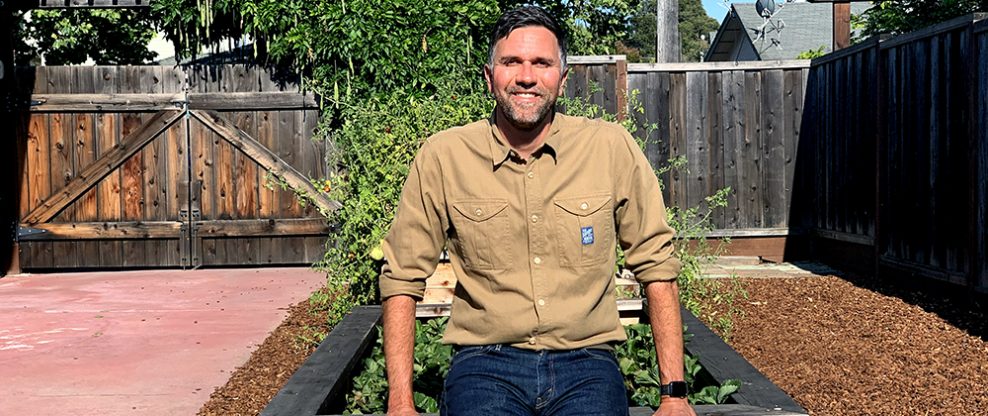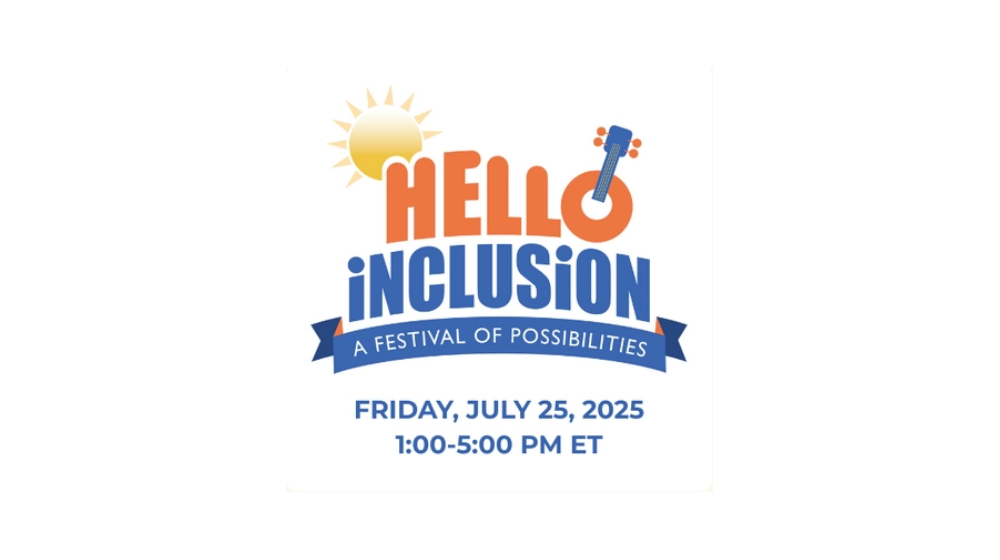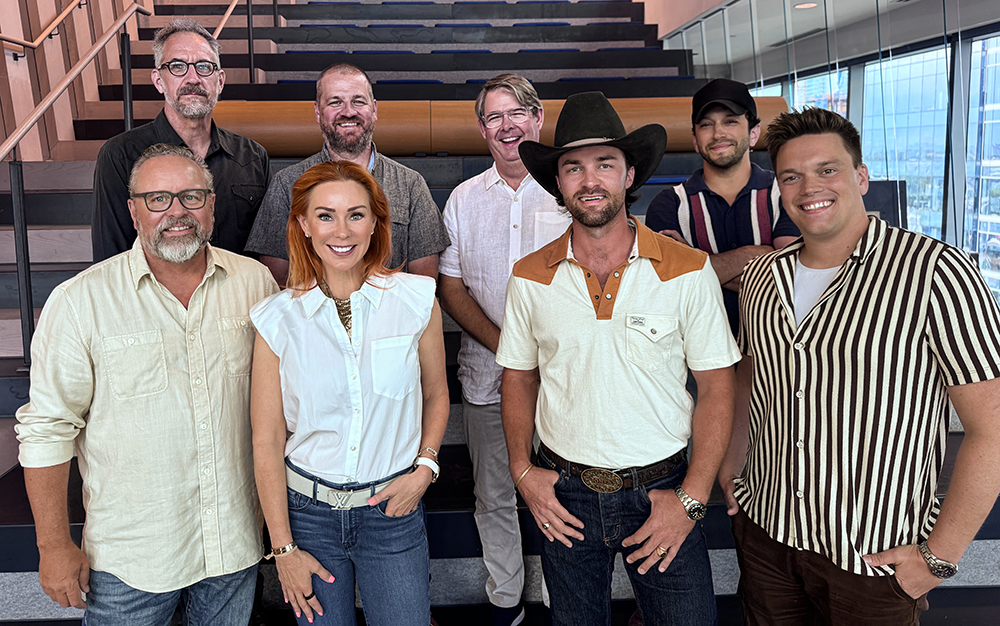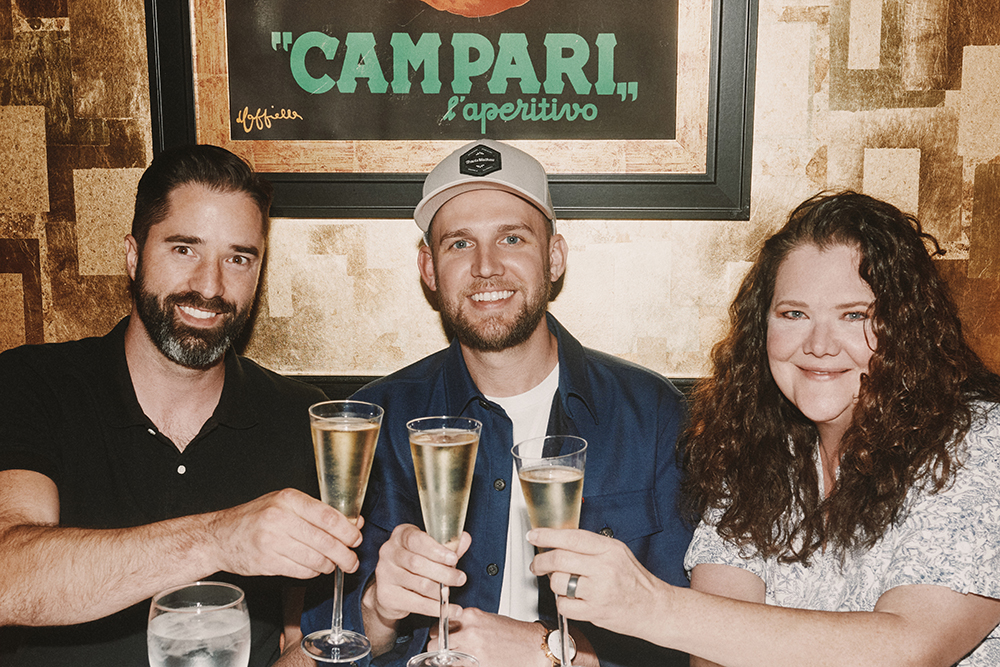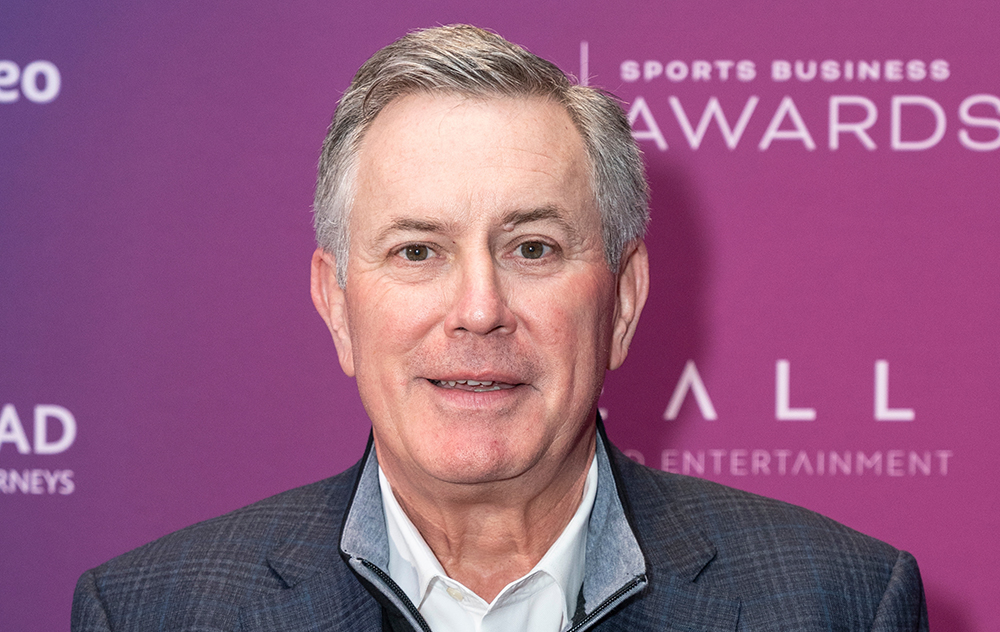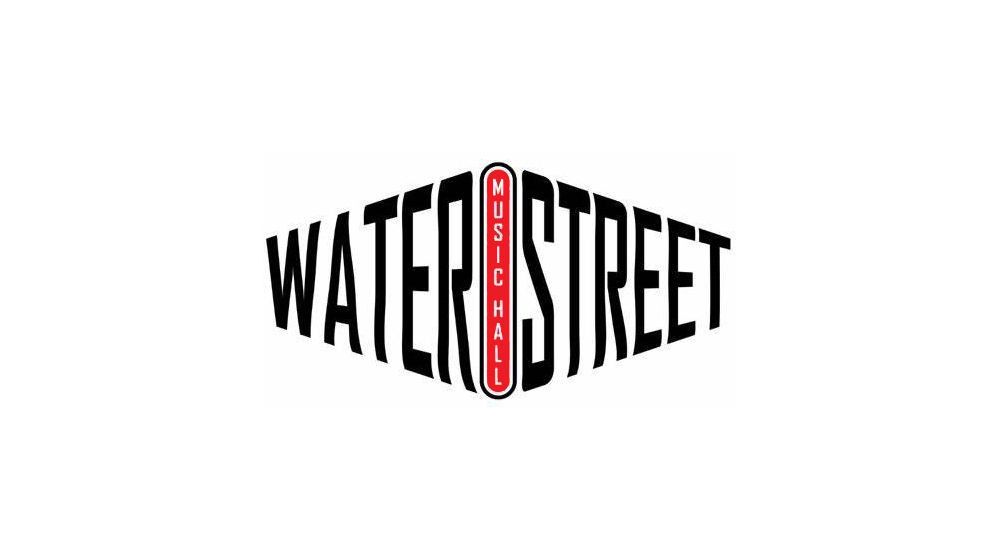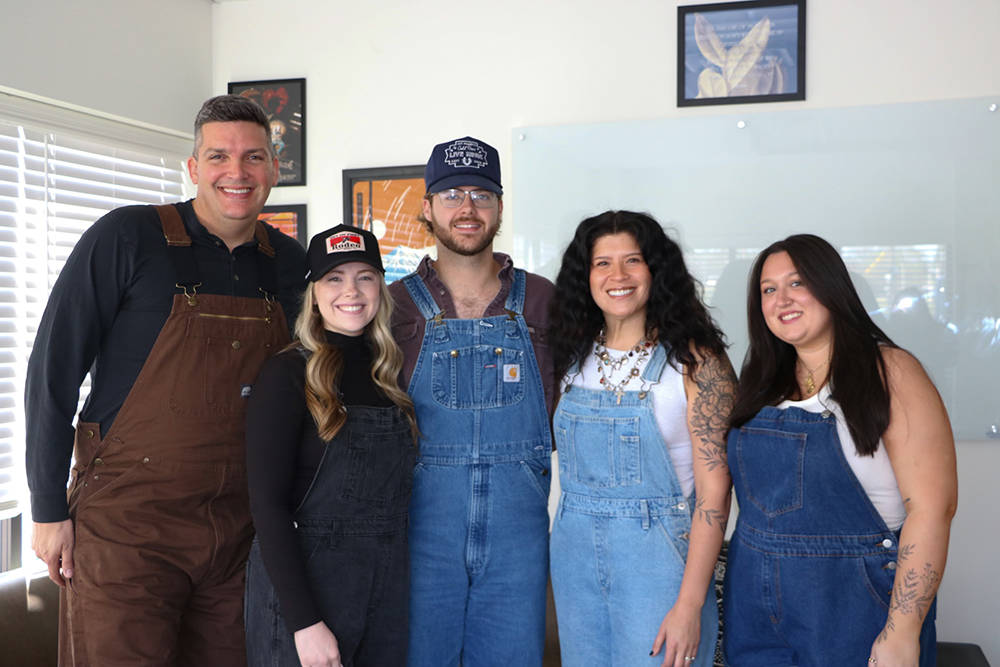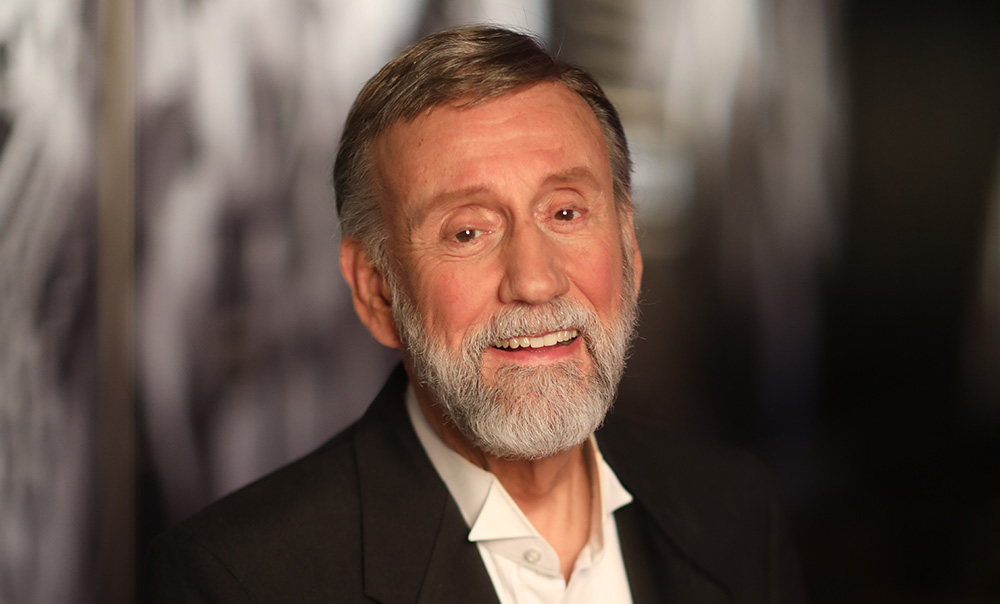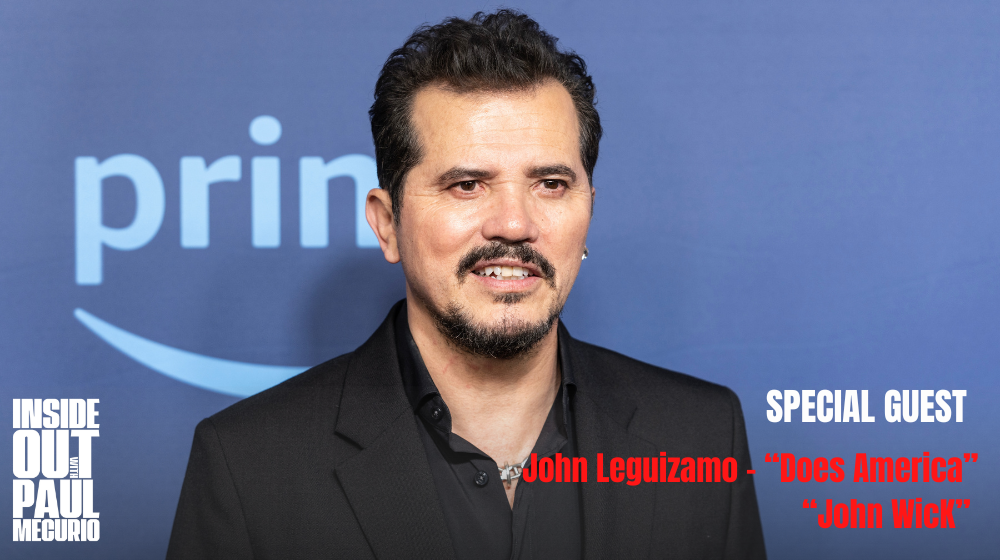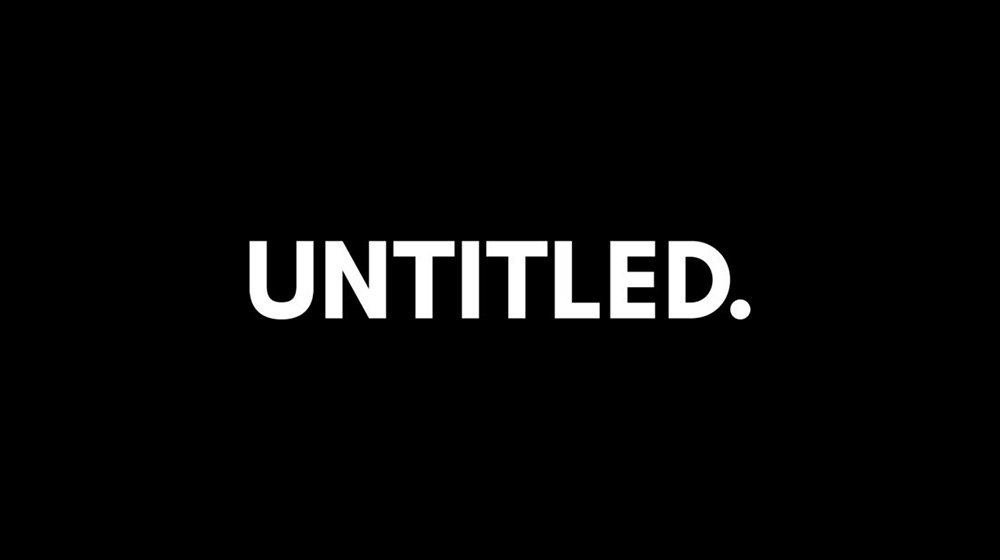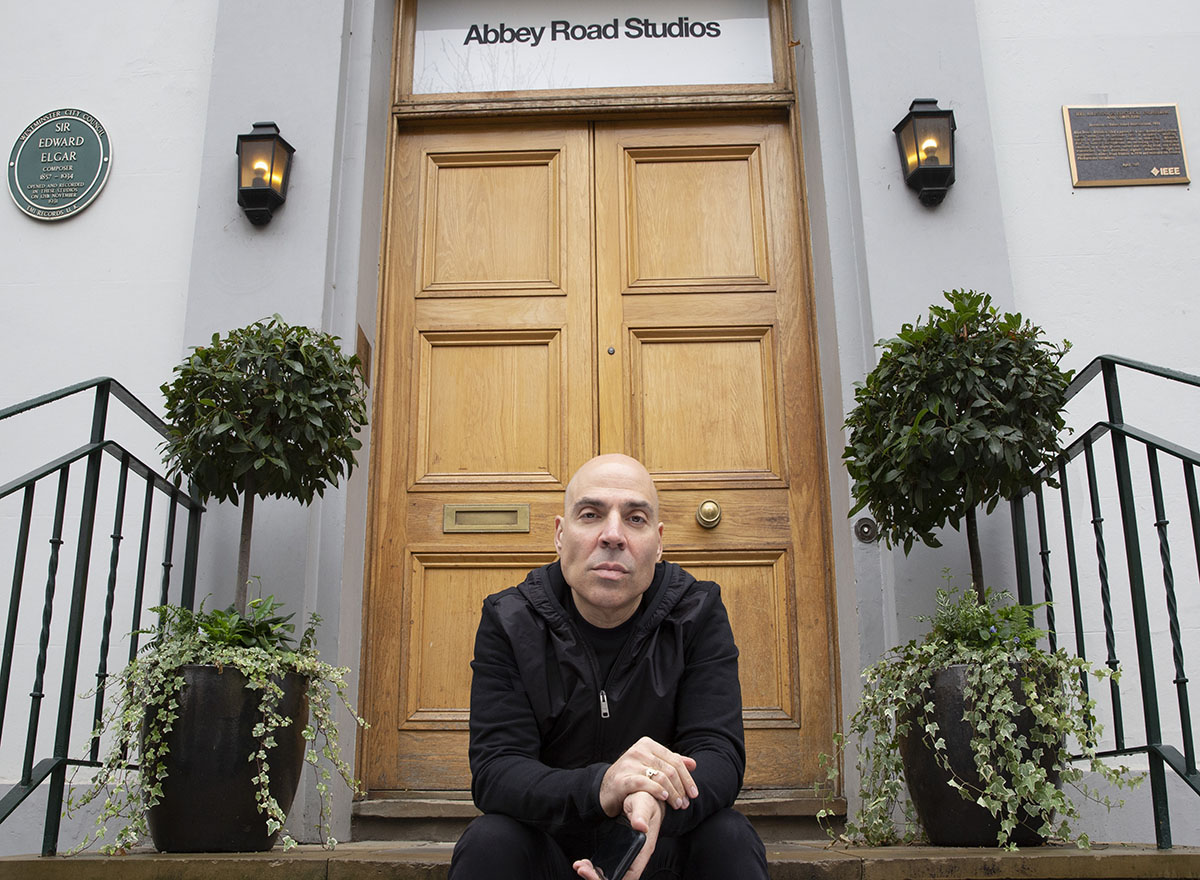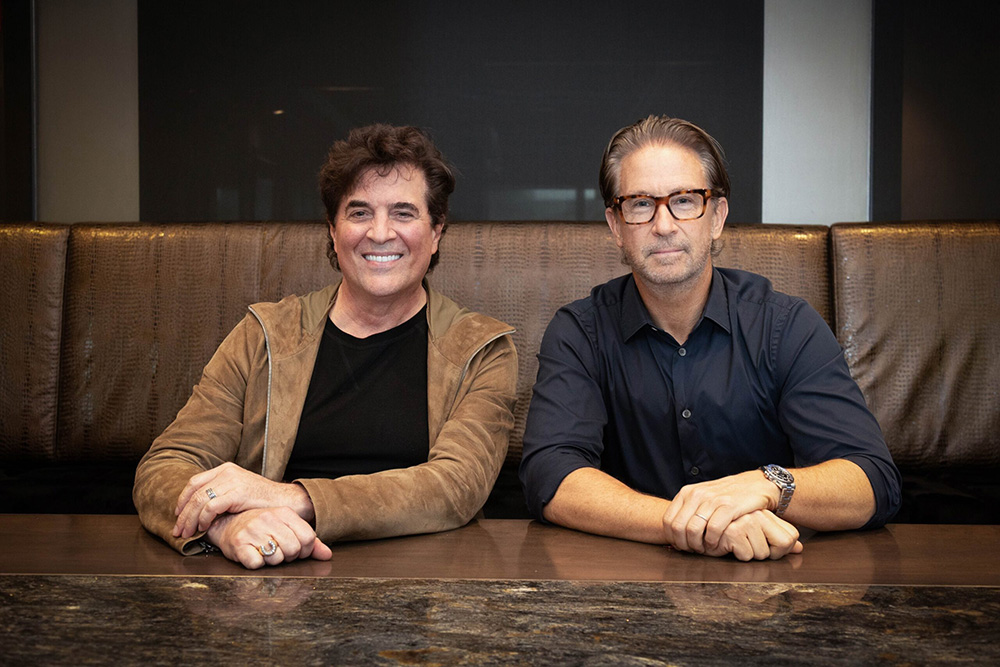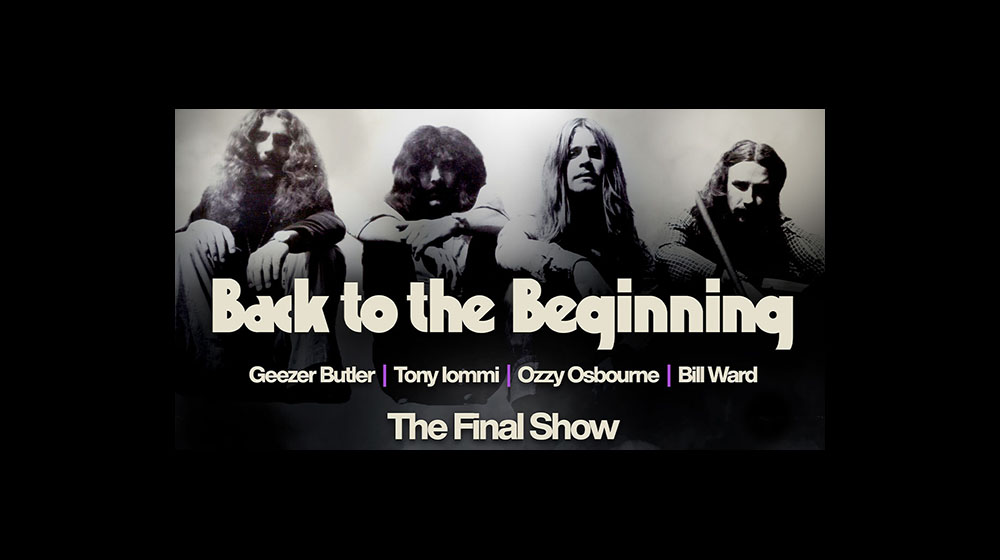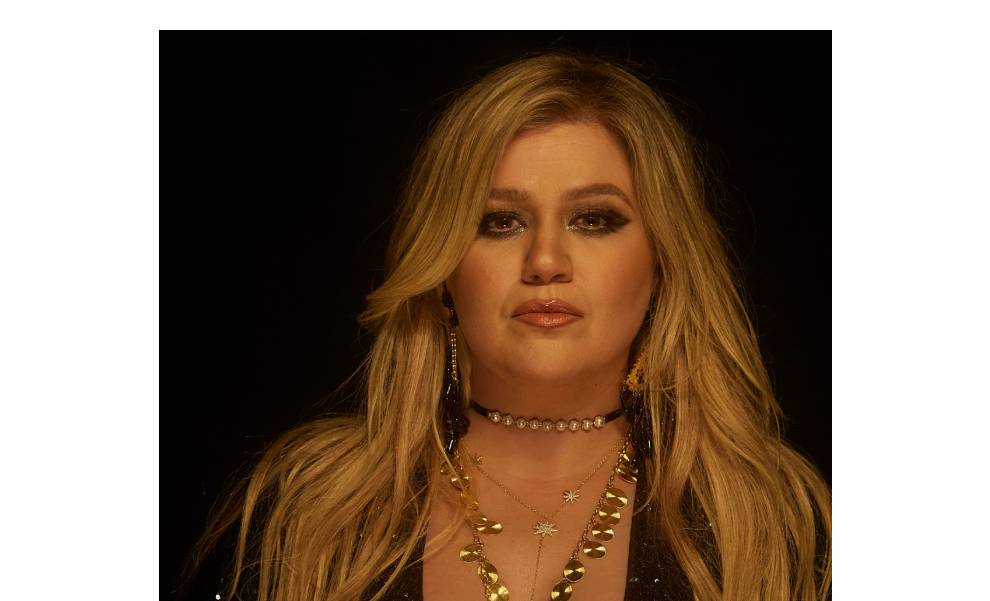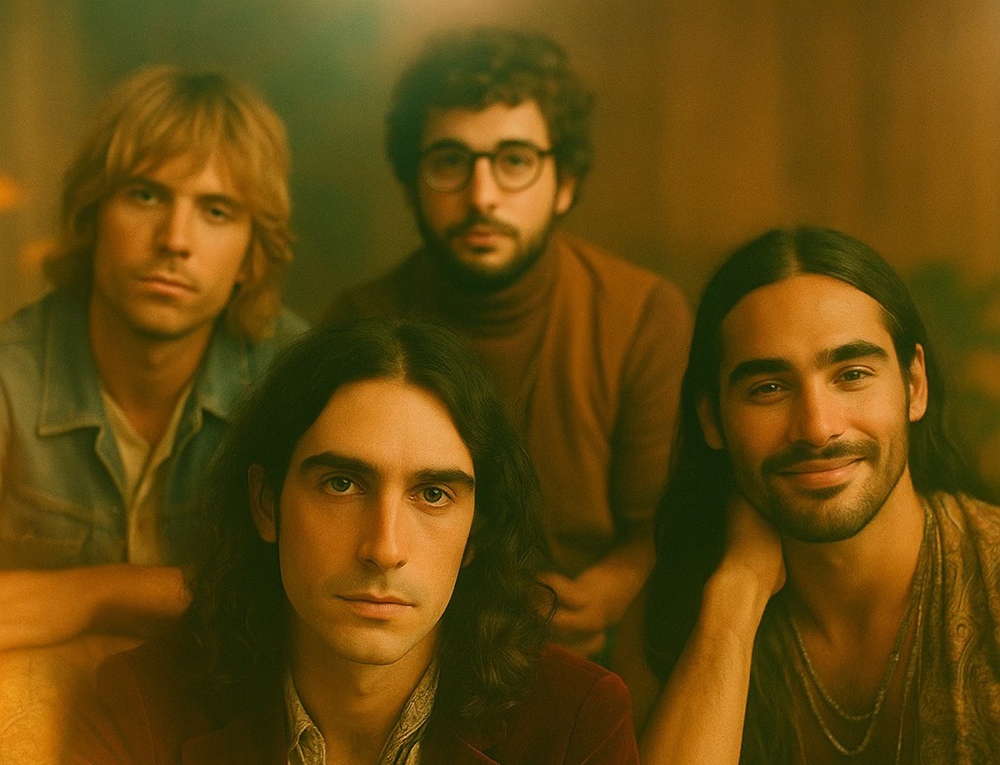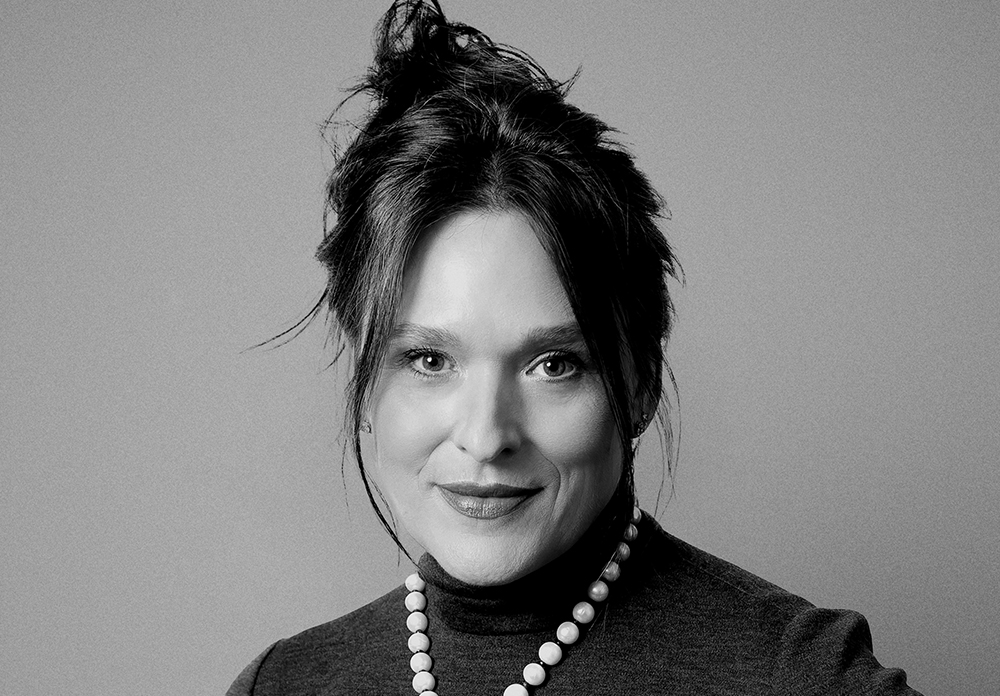This week In the Hot Seat with Larry LeBlanc: Gunnar Hissam, Label Manager/Partner, Om Records.
Om Records is celebrating an anniversary with the release of “Om Records–25 Years,” a fascinating 26-track compilation of new tracks, unreleased material, and classics from artists on Om’s roster.
“Om Records–25 Years,” marks the 700th release by the San Francisco-based imprint. It was initially curated with only 25 tracks representing 25 years of the company, but label manager/partner Gunnar Hissam couldn’t resist adding J Boogie’s Dubtronic Science’s “Be Free,” featuring the flute talents of Carlos Araiza.
Hissam, as you will soon realize, is Om’s biggest fan.
He’s also down with deep house, techno, hip-hop, electronic music, dance music, indie, acid jazz, and whatever else catches his ear.
Little wonder that Hissam just had to include several tracks which have been released as singles leading up to this anniversary album: Mark Farina & Homero Espinosa’s “The Story,” Reptile Room’s “Sunlite,” Brooklyn’s Body Language’s “Let’s Try,” and a dazzling new track from former Om employee Kaskade and Colette, “When I’m With You.”
Om Records was founded in 1995 on San Francisco’s Haight Street, above Tweekin’ Records, by Chris Smith and Steve Gray. The company evolved from being a purveyor of multi-media CD-ROMs to being a dance music tastemaker, widely lauded for its output of house, downtempo and hip-hop releases, as well as its notable series compilations, “Om Lounge” and “Mushroom Jazz.”
Originally released as one of the first-ever continuous DJ mixes on CD by DJ Mark Farina, “Mushroom Jazz” introduced Blue Boy’s “Remember Me” to a mainstream audience, and also included a CD-ROM with a remix program, and in-depth interviews with like-minded DJs and artists of the day, such as James Lavelle and Gilles Peterson.
Past Om artists have included such notables as Kaskade, Wolfgang Gartner, Ladybug Mecca, Juan Atkins, Groove Armada, Underworld, Dirty Vegas, Bassnectar, J Boogie, People Under The Stairs, Samantha James, Amp Live, Greenskeepers, Hot Toddy, Wagon Cookin, Naked Music NYC on top of multiple sub labels.
Om’s current roster includes Body Language, Rocket Empire, Reptile Room, the Jazzual Suspects, TWINKIDS, Shiny Objects, and King Kooba.
It was during the original “Mushroom Jazz” tour in 1996 at the Hyde Park Café in Tampa, Florida where Hissam, then a student at Eckerd College in St. Petersburg, met Mark Farina, and the Om crew; and his years of service at the label began as he and his roommate next launched the Om Rep Program.
After graduation, Hissam moved to San Francisco, and interned at Om before coming onboard full-time, and then moving through the ranks of the company to become its label manager and partner.
Managing a label during the COVID-19 pandemic, Hissam will tell you, is not easy.
I want to read you what Kaskade posted about “Om Records – 25 Years.”
“I think my take away with Om records is that a lot of like-minded, really cool people working on music, trying to put art out and doing it without compromise. The fact that Om can continue to do this their way, and remain relevant? It’s commendable, especially at a time like now when everything is just like, ‘What’s next?’ They’ve lived through it all. It’s an honor to be able to have worked on this project, and to have part of my story be with Om Records.”
Is that not cool?
Yeah, that’s awesome.
What a better way to kick the 25th anniversary album off than reuniting two classic Om artists on a single track? You had reached out to Kaskade (aka Ryan Raddon) about being involved, and while he was in the midst of putting together his forthcoming compilation album, “Destinations: Living Room,” he sent you the instrumental that became “When I’m With You,” and suggested you ask his longtime friend and collaborator Colette Marino to sing on it.
That’s right.
Both Kaskade and Colette hail from Chicago. Both DJed at different times at SmartBar there. Chicago’s Superjane, with Colette, DJ Heather, Lady D, and Dayhota, was probably the first all-female DJ collective in America.
Correct. Colette is from Chicago proper, and Ryan is from suburban Chicago. They didn’t know each other there. They didn’t meet until afterward. Colette was still there, but Ryan was living in San Francisco.
Trained as a classical singer, Colette had been DJing since the early ‘90s. She found success as a DJ, as well as a vocalist and producer, releasing singles before signing with Om in 2003.
Yes. Just around the time that the Kaskade stuff came out. She was on his second album “In The Moment” (2004) with one the song, “I Like The Way.” Then Ryan produced some of the music for her debut album, “Hypnotized.”
(“Hypnotized” was one of the most downloaded house dance albums on Apple’s iTunes Music Store in 2005. The track “What Will She Do for Love” was a Billboard #1 Dance Club Play Single. The title track, “Hypnotized,” was licensed to the 2006 film “The Devil Wears Prada” for its soundtrack. Also the track “Feelin’ Hypnotized” was featured in a 2003 global Motorola campaign alongside legendary DJs Felix Da Housecat, and Paul Van Dyk. The spot walked away with the “Best Song in a Commercial” award at the 2004 U.S. Dancestar Awards.)
Kaskade grew up in Chicago, moved to Salt Lake City for college, then came to San Francisco where for the next few years, he worked as an assistant (to Om founder) Chris Smith, sifting through artist submissions, creating graphics for releases, and helping artists work in Om’s studio.
After recording a demo under the name Kaskade, and sneaking it into Om’s submission pile, Chris signed him, and the label released his debut album “It’s You, It’s Me” in 2003. As the “new school” artist on Om, however, Kaskade was the act opening Om’s shows, going onstage at 10 P.M. when venues were just opening up their doors.
Nobody knew who he was. Nobody knew who he was. He was just a guy that put album covers together and opened up all the shows. He was the opener, yes. And a lot of the time nobody was there.
You started planning the 25th-anniversary album two years ago?
Well, yeah, we were looking at the calendar going, “When is it? 2020? Well, that’s over a year (away).”
What was going through your mind as you started going through Om’s incredible catalog?
It’s vast. There’s a lot to it, and it is all over the place.
Why not just compile original Om masters, and be done with it? Having original and new tracks and re-mixed tracks meant considerable ingenuity, and elbow grease to secure tracks.
Yeah, so we kicked around the idea of, “Let’s just remix everything. Let’s get the top 25 songs, and remix them all. Get new blood to remix them, and do some old school artists.” Then we were sitting there going, “Oh my God, it’s going to be like herding cats getting all the music turned in.”
There were likely rights issues with even some Om-owned tracks, and most certainly from tracks that Om licensed from other labels.
Well, for sure. It’s just a matter of are we going to do pull licensing (paperwork) for all of these old songs? And what if nobody gets it? What if people all want to hear the original versions?
There will be fans who didn’t want you mixing or altering classic tracks.
Right. We are also talking about some older material where the parts for some of those songs might not even be available. We are talking about archeology. We are talking about digging through boxes in basements. That’s how old they are.
What shape is the Om archive in?
It’s okay. It’s okay. It has definitely been gone through by multiple sourcing. Some of this though is from back in the day when we were backing everything up on CDs.
As well Om has moved so many times. From my time knowing the label, I recall it being on the third floor of old Post Tool Building at 245 Van Ness Avenue; on Third Street near the Giants Ballpark; at an office/event space in the Dogpatch; and your current home, a 5-story artist studio space at 1890 Bryant Street, between Mariposa and 17th streets in the Mission District.
Oh yeah. We have moved quite a bit. The one things that I was originally doing was keeping the press books together. Every artist would have a press book, and some artists like Kaskade have multiple books, and they are just in binders. It is just hard copies of everything. That (original) stuff is gone. We still have it, but that stuff is probably digitized. Maybe, some of those old magazines have some of that stuff or have it on file.
Not likely. Few magazines have digitized their files. Also, in seeking out master music tapes, you may not find the complete version of the released track. You might get a section of the track here, and another part there. Often the producer or artist borrowed them and never returned them or outright took them.
Yes. There’s a lot of that. There’s a lot of that.
It is not unusual to have multiple masters of a track. An album master; a singles’ master; and assorted 12” or specialized versions. Often with different mixes making it difficult as well
I was involved with a pair of comprehensive retrospectives of Canadian music: The 1996 four-CD box set “Oh What A Feeling,” and its follow-up “Oh What A Feeling 2” in 2001. Determining what were the original 45 RPM masters was difficult in some cases. I had to take a guess sometimes.
We even had to do that a couple of times with our stuff. Even with the albums that we have. Like with “Acid Raindrops” Just to have the intro, and then the outro which has that sort of country pretty outro thing, and I wanted both of those on there because it flows right into (Mark Farina & Sean Hayes) “Dream Machine.” Even “Dream Machine” had a ton of different versions with control towers and pilots talking throughout the whole album. So it was depending on what version I was looking for. The single version abruptly cuts at the end, and we didn’t want that one. It just cuts off. I don’t know why. With “Dream Machine,” we had to rejig the masters just because we grabbed the wrong ones.
How many tracks does Om have under its control?
“Om Records – 25 Years” is our 700th release. There are thousands of songs in the Om catalog. It’s a vast catalog. I’m not really sure how many songs. You have to remember that a lot of the catalog is compilations, and licensed material.
In A&Ring the album did you consult (founder) Chris Smith, as well as past Om partners like Kiri Eschelle, and John Cornett?
Yes. When I started here it was Chris, John, and Kiri. The whole gang.
What staff does Om have today?
It’s myself, Chris and Brian Clothier. Brian is the CFO, and partner. He makes sure the bills get paid.
Everybody is working from home now?
Everybody is working from home. We do have the office, but it’s a shared space. We aren’t trying to go in there, and die.
In mid-March, you were in the midst of planning out this 25th anniversary album and then the COVID-19 pandemic was declared. At first, it wasn’t clear just how bad it was going to be. The plan was to release the album and throw release parties with multiple artists. You moved the album’s release to July 10th, hoping to get out from what was going on, but there’s since been further outbreaks and a continued lockdown. Obviously, release parties are going to have to wait until they can be done safely
I know. I know. Now is not the time. As soon as this lockdown happened, I stopped. I took a week to think about everything. I wasn’t sure what to do because the album was done. The rollout was ready for Alexandra Greenberg at Falcon Publicity to start sending information (and music) out to press, and we were thinking about it all. Getting everything lined up. Singles. And I was like, “I just don’t know.” I remember talking to Thes (One) from People Under the Stairs, and he was like, “I think you should keep this thing fluid.”
What is Om doing to market the album?
We are focusing on opportunities at this point. Artists definitely. We have a bunch of videos coming from the artists telling stories about Om. Yeah, we are really looking forward to getting the vinyl out. But I don’t know what else we are going to do. Maybe, we can do some things. I know that people are asking for extended versions and remixes. That is something that people just expect to happen. There’s a lot of life that can come into this 25th anniversary. My eyes are set on these artist’s albums. I’m thinking, “Shoot, the 25th anniversary is supposed to be a celebration. We are supposed to be doing these parties, and teasing new releases of some of these new songs, even though the Body Language song (“Let’s Try”) isn’t going to be on their album (“Travel Guide”), but the Rocket Empire song (“On A Bridge”) is, and the Shiny Objects’ album doesn’t have (“Believe In Somebody,” but it’s out as a download.
Om is famous for its hundreds of parties in Los Angeles, San Francisco, Seattle, Chicago, Ibiza, Barcelona, London, Dubai and, of course, the annual Om parties in Miami that were followed by compilation albums of new tracks from the label including from Andy Caldwell, Samantha James, Iz & Diz, Groove Junkies, Afro-Mystik, Chuck Love, Mark Farina, Fred Everything, Home & Garden, Mike Monday and so on. Miami…man, those parties are legendary.
Oh, the Miami parties were sort of the crown jewel of the year. Everything has kind of been weird with the coronavirus, but before that what we wanted to do with this 25th anniversary was to do an old school Om party. That meant with multiple genres of artists, DJs, live bands. Maybe some hip-hop stuff going on. New school, old school. Do maybe two nights in San Francisco, and one night in L.A., and New York and, if we could have pulled it off, Miami.
That was the idea.
I had a dream actually. I had a nightmare about all this, and that’s how I got the title “25 Years.” I was looking at a marquee, I don’t know where it was, but it was a big marquee. And I was looking and it, and it said, “Om Records 25 Years.” The nightmare portion of the dream was that I didn’t have anybody booked. I think that it was the night of the party, and I had nobody. I hadn’t even called anybody. I woke up, and I said to myself, “Well, I have a title.”
Of course, Chris, being the maestro behind so many funky Om projects, including Afro-Mystik and DJ Fluid, hasn’t left Om, though he’s now also operating the Monarch and The Great Northern nightclubs, and The Pawn Shop restaurant. Chris, under the name Shiny Objects, and joined by vocalist Jesse Rennix, contributed the deep house track, “Believe In Somebody” to the anniversary album.
He is still part of Om. His day-to-day is that he’s got music venues and a restaurant. He turned over the labels to me.
Chris also has the marketing company, Up All Night, which has a cool app that provides subscribers access in real-time to live events, some on an exclusive basis. He has also launched Up All Night Gold, where members pay $25 per month for access to numerous premium events. A nightlife concierge then helps plan their night and gets them into parties.
Yeah, Chris has Up All Night. He’s busy. He’s got some more stuff planned. He’s keeping it under wraps for now.
I’m happy that on the 25th anniversary album, you included two tracks by People Under The Stairs which was the first hip-hop act signed by Om. Despite not quite achieving over-the-top mainstream acclaim, this L.A. duo–Thes One and Double K—toured China, Europe, and South America; performed at Bonnaroo, and Coachella; and among their fans have been Chuck D, Biz Markie, Phish vocalist Trey Anastasio, and the late Mac Miller who released a mixtape, “I Love Life, Thank You,” which included a direct homage to the duo on the song “People Under the Stairs.”
One of my all-time favorite hip-hop tracks which you have included is “Acid Raindrops,” featuring Camel MC from their third album, “O.S.T.” in 2002.
They were the first (hip-hop act), and they have technically retired (last year). So that was the tricky thing. I remember when I talked to them originally, and I told them about the idea it was sort of, “Yeah, we’ll work something out. I’m sure we’ll be able to work something out.” Then the months went by, and Thes One stepped up, and said, “We’re starting to put this thing together.” He sent me a handful of unreleased songs. It was a bunch of good stuff. I loved it all but I could only pick one track because it was the 25th year album; it wasn’t a People Under The Stairs release you know? The cassette had 5 songs that were recorded either during the “O.S.T” (2002) sessions or the “Carried Away” (2009) sessions. I got the email with the link to the 5 songs and one of them was a demo of “Turfbuilders,” and that was for the new side and, of course, “Acid Raindrops,” had to be on the retrospective side.
“Acid Raindrops” is such a pivotal track in their career.
I think so. They’ve got a couple of bigger tunes, but for me “Acid Raindrops,” that’s the one, and I love the sample from “Mister Rogers’ Neighborhood.” It was a big release for them.
Zany samples were all part of People Under the Stairs’ charm. They didn’t take themselves too seriously, yet they remained credible. On “Carried Away” I remember there was “The Price Is Right” theme in the drinking anthem “Beer,” and an Original Keyboard Cat music nod in “DQMOT.” Goofy samples yes, but they fitted right in with the tracks.
We had released “Question In The Form Of An Answer” (2000) and it was all leading up to “O.S.T.” (2002). What was cool about that record for me personally was that I had just taken over the publicist’s job at Om. I remember meeting Thes in L.A. at some Om party. He came up to me, and he said, “The album is called ‘O.S.T,’” original soundtrack.” And I was kinda, “Well,” because I hadn’t heard anything, and I was just meeting the guy. I remember when I heard the record, and this is a record that took a long time (to break out). When we put that record out, they were still underground. They weren’t a mainstream hip-hop act in any way. So I remember when I took “Acid Raindrops” to High Times (magazine). I thought, “I have a slam dunk here. I’m going to call High Times, and tell them I have this song about acid raindrops.” I can’t remember who the music editor was then, but his only question to me was, “Do they smoke weed?” I was like, “Listen to the song.” Anyway, he passed on it.
Not any easy sell?
It wasn’t an easy sell, though the record, I think, is brilliant. I think it’s a hip-hop classic. I would argue that with any hip-hop head. I can remember the biggest thing that happened to us, I don’t know if you remember URB magazine. One review for the full page at the beginning of the review section–a full-page review–and all the other reviews would be little blurbs scattered on the (follow-up) page. “O.S.T.” got the full-page review, and Mosi Reeves reviewed it. It was an awesome review. I remember being at the Winter Music Conference when that issue and that review came out. I was like, “Wow. We finally did it.” And it was worthy of the page you know.
It was just a lot of fun to work with those guys. It didn’t feel like we could do the 25th anniversary without them. So I was so happy to have them. At a certain point I was thinking, “Oh shit, I guess that this is really happening.” Getting a new song, “Turfbuilders,” from them was one of those moments where I thought, “Well, I guess that I will have to finish this thing.
As I said, Om was quite active with live events. Had that lessened in recent years?
It had quieted down. Acts though continue to tour. We were trying to break artists and a lot of artists broke so they could go tour. Obviously, the event side was always sort of a gamble because when you are the promoter you never own the venue. With Chris now, he can be the promoter and the owner. But even in Miami, where there was some kind of money, but also, maybe, if we overspent our budget, we’d end up losing a huge chunk of change. So being a true independent label, we had to realize that we have to make smarter moves and we have to focus our attention because we only have a certain amount of time. What can we do to keep the lights on and keep everything humming?
Om has also had the problem faced by many independent labels. That it would develop acts that were snatched away by larger labels.
Exactly. I always compare Om to the Oakland A’s. You look at the Oakland A’s. They sign talent and they always lose them. That definitely hurt us, and it hurt the staff. But with the artists, you have to understand that this is a business.
The rise of digital and streaming. Those aspects of music industry were not there in the beginning of Om. With fewer retail outlets to sell music, resulting in lessened music sales, did Om have to move more into other areas of activity including synch licensing?
We sure did. So (Om partner) John Cornett was there at the beginning and he saw that lane with music licensing and got in there. This was back in the days when the indies weren’t necessarily doing that. I don’t know why not. They didn’t get the memo that getting music into video games like “Tony Hawk” (who rose to fame as a pro skateboarder before launching his own skateboarding company and a popular video game series) that was a big thing, and John was right there getting old music into TV shows and all of these video games.
That’s a role you took over from John and developed further when he left in 2007?
I remember when he moved on. It was kind of a changing of the guard, and the licensing world fell into my lap. I was suddenly the guy going to L.A. and meeting with folks, and inviting folks to hear samplers of music, and focusing my attention on not necessarily putting out records, but in sound design and trying to help music supervisors get the right stuff and helping them do their jobs and making their lives easier. So music licensing became a nice chunk of change for Om.
Are you surprised that you have been nearly 20 years with Om?
Yeah.
You are the equivalent of the guy who started in the mailroom and worked their way up to be running the company. Also, my friend, you are a lifer.
Yeah, yeah. True. I don’t know what else I would do really. I’ve thought about it. I was the one that, maybe, considered operating a pie shop or something. But no. I don’t really know what I would do without music. I want to do it. I’m itching to do it now. We have this 25th year anniversary album out and I have all this stuff that has been waiting for this time come out,. So I am itching to get busy and get back into it, grinding away doing this project. And the vinyl is coming, and I can’t wait until people see the vinyl. It’s so cool.
Of course, you came to Om as a music junkie.
I did. Obviously, growing up in Florida, I had my hip-hop experiences, right? I had my little Walkman and my XPS headphones. That was listening to tapes.
Then at Om, you came to realize that operating a music label, it’s a business.
Yeah, exactly. I came in there thinking, “Oh this is great. Free stuff. For the most part, working here in the beginning, it was all about free stuff. There was no real money. The perks were great.
Before working for Om in San Francisco, you were attending Eckerd College in St. Petersburg, Florida, and working at the campus radio station WECX, when in 1996, you met trailblazing DJ, producer, and house music icon Mark Farina, as well as Kiri Eschelle, and Patricia Ryan from Om, at the “Mushroom Jazz” event at the Hyde Park Café in Tampa. Afterwards, you and your roommate left loaded up with Om T-shirts, and vinyl..
I got T-shirts, vinyl, and stickers. Ryan Thompson was my roommate He was a music head, and he was in charge of the station (WECX). I was just a hip-hop director. Ryan was really getting into what they would call acid jazz at the time. We helped bring that station WECX to FM. There’s a guy down there at 98 Rock (WCTB), Big Rig (Ron “Big Rig” Michaels (still at the station, 1 pm-7 pm daily, and syndicated on over 100 iHeartMedia stations daily). He helped us. Got us a transmitter, and got us into FM, and FM stereo. When we got there, the station was in shambles. The college was started in 1960 and everything was broken. They had transmitters in the dorm. It was just all jacked, and not working. We got it up and running. You can get a lot of stuff done with some brainpower, and some phone calls.
Especially if you are cutting classes.
Yeah. Well, classes yeah.
Your major was literature.
I didn’t know.
Did you graduate?
I did. I didn’t know what I wanted to do, of course. I thought that I would be an English teacher. I graduated with double minors. Minors in philosophy, and religious studies.
Oh well, those are studies that can really help you in life.
I know. I got all of the good ones. I started with literature. The more literature I read and being around the people I got into those classes with, the less interested I was in it. The philosophy stuff really turned me on. Ryan was a philosophy major so he blah blah blahed all day about philosophy.
Still, there was the musical aspect of your college years.
We just took over that station, and we were doing benefit shows and spring concerts. We had this show called “The Funk Explosion” that would go on Thursday nights from 8 to midnight. We had a road sign that we hand-painted, and we’d bring it out. It said, “Honk For The Funk.” Everybody driving into the campus would be honking. We built a stage in front of the station with a runway, and we did fashion shows out there. It was just so much fun.
While at Eckerd College, you and Ryan laid the foundation for Om’s college rep program.
We started the whole thing. Multiple reps across the country. Ryan and I were the first two. He had Tampa and St. Pete’s, and I had Clearwater. We just jumped around some bridges there, and that was back when Om had “Mushroom Jazz.” So it was “Mushroom Jazz” all of the time. Putting up Blue Boy displays, and huge blue mushrooms.
Was there a developed electronic or hip-hop scene in St.Petersburg/Tampa/Clearwater back then?
It was a very small scene. Fort Myers, where I’m from, is pretty different, but Tampa and St. Pete, there were shows. Ybor City (in Tampa) had a lot of shows. There was a really great club down there that was amazing, The Rub, and The Ritz Theater. A legendary place called Jannus Landing in St. Pete. There was a place called Masquerade.
Despite Tampa being ultra-conservative, a hub of adult-oriented entertainment has always been found in Ybor City is the city’s historic district.
Ybor is kind of like Bourbon Street drunk-and-crawl. But The Rub was super fun. I dare say upscale. The Rub was cool. We saw Esthero and Camp Low there doing a show which was amazing.
Esthero is a friend. I’ve known her since she was a teenager.
Well, awesome. She performed there. There’s a good Canadian. She was amazing. She was featured on a Zion I & The Grouch track called “Make U Fly” we put out. It’s a great track.
I see online that Jamaican DJ Sasha appeared at The Rub.
Yeah, they had DJ nights. I think The Rub was started by one of the guys from the Gatorade family or fortune and they opened this sweet club. It was so cool. It was so ahead of its time for Tampa and, of course, it closed. But it was so great.
Well, four University of Florida scientists, Dr. Dana Shires, Dr. Jim Free, Dr. Alex de Quesada, and Dr. Robert Cade, invented Gatorade in the mid-60s. Cade, a kidney specialist, whipped-up the first batch of Gatorade in his Gainesville lab. They originally dubbed the concoction “Cade’s Cola.”
The Rub was bringing in DJs, and then Hyde Park Cafe started, and that is where I met Mark Farina. They were doing shows there. There was a guy called Jask who still does parties down there. He was the one who was hosting his night, and he had Mark come into play.
Did you try DJing in Florida clubs yourself?
I didn’t because I didn’t have the equipment. I didn’t even know that it was a thing. Granted, there were no clubs early on. There was a place called Sparklers in Naples. There was a radio station in Fort Myers called The Spark (91.5 The Spark that played hip-hop, freestyle, and dance music. Its Saturday night broadcasts featured live performers like DJ Magic Mike, Johnny O., Sexy C, and other South Florida artists). Sparklers was the neatest thing. None of us were old enough to go. We were young. There were also clubs in Miami and we weren’t going to those clubs either. So I didn’t really know what that was. I was just so young.
Yo! MTV Raps (television music video program) was probably the first time I saw DJs or people with turntables scratching. I just didn’t know anything. I remember going more into it because I had heard “Jam On It” by Newcleus.
With sped up, chipmunk-styled voices, and influenced by George Clinton and Parliament-Funkadelic, “Jam On It” was one of the first rap songs to appear on Billboard’s Hot 100. It peaked at #56 in 1984. The track greatly influenced dance music.
I heard it on a car ride home from a birthday party. We were in this giant station wagon with wood paneling. We were sitting in the back, and I heard that song, and it was like goosebumps all over. “What the hell is this?” And we just glided home from this birthday party listening to this. So I went into the mall to a Tape World store. I walked into this place, and I said, “Do you have “Jamboni?” And they were like, “What?” I said, “I don’t know. I think that is what they are saying.” The clerk said, “That sounds like ‘Jam On It.’ Here you go.” It was a cassette. it wasn’t even the Newcleus album. It was a hip-hop compilation cassette that had “Jam On It.”
Tracks were often bootlegged onto unmarked cassette compilations back then.
Tons of compilations. My first experience of that was this comp. That started my search. Every record collector, I guess, gets that bug, that first bite, I’m guessing. But that was it for me. I started looking for the album (“Jam on Revenge”). I want to hear more music from Newcleus. I remember it being tough to find. This was so long ago, but it was a challenge to find music then. I would call record stores, and I’d ride my bike up, and look around. This was back in the days when you walked into a record store and it was like going into another world. There was a place called Rainbow Records…
In Fort Myers. It closed down a long time ago.
Right. Back then, you’d walk in there and it would smell of weed and patchouli and incense. There were cats sleeping.
There were two types of records stores back then. The mall record store racked the top 50 albums, hit singles, and some catalog. Then there were music shops filled to the brim with imports, and obscure recordings with the owner or clerk a bit shady. He’d ask. “What you were looking for?” And then he’d declare, “You don’t want that. You need to buy this.”
Yeah. You had to ask someone to get a tape down. You’d look at the wall behind them, and they’d have to bring it down.
Or the clerk would have a rare pressing underneath the counter, and with coaxing he’d bring it out.
Yeah. yeah. It was an experience. It was so scary going into a record store. You weren’t really sure what was in there. It was dark.
Today, music fans can find the music that they are seeking, and make new discoveries at a touch of the keyboard. Just click, and bang.
Yes, so the challenge today is how to get to those ears. You’ve got the ears. They are all there online. Back in the day, the gatekeeper was at the record store or the distributor blah blah blah. Now we are almost talking about robots here; that we need to figure out how to game some algorithm. Are we talking about human beings? How do we get to those ears, or in a better independent broad sort of way, how do we build a platform up so the fans can find us? So we can bring the tunes to them rather than having to go and knock on doors. Digital today is like when iTunes came out. It’s scary, but it’s exciting. It’s really a matter of looking for opportunities and trusting that the music is strong enough and that the music is available and people will gravitate toward it.
How come you didn’t end up in radio? When you came to California in 1997 you worked for a year at KOME (98.5 FM) in San Jose doing street marketing, and live show promotions.
KOME, yes sir. I wanted to do radio. I moved out here (to California), and I got a job there. I thought that I was going to do radio (as a career). I got a job there, and what I learned from being a promotions guy, driving around in a Hyundai setting up displays, and giving away free stuff was: One, you don’t get the show that you want. And, two, the pay was terrible. One of the guys there was like, “Don’t do it. Run. Don’t give in to radio.” We’d be hanging out late nights after doing these shows, coming back to the station to drop everything off. It’d be after midnight, and we’d all be sitting around at the station and, again it was back to the free perks, and a lot of drinks.
Was that after you were interning at Om?
I was doing both at the same time.
We’ve talked about scouring through music crates in music stores years ago looking to discover music. Om was one of those coveted labels for music fans.
It still blew my mind back in the day that Om was a thing. I remember walking into a record store—because when I was first interning at Om, I would put the full catalog in my trunk, and I would drive to record stores all over. Drive to South Bay, and to San Jose. I remember going to this record store in San Jose when “Mushroom Jazz” came out, and there were a bunch of Blue Boy singles. One of the versions was with a white label. I had to remember to keep a certain amount of copies. I couldn’t sell them all. One record pool wanted to buy them all. I had to tell them they could only have 10. I just couldn’t get rid of them all. It wouldn’t be fair to everybody else. I walked into this store. The clerk was sitting there. He grabbed a copy and put it on, and he was like, “Yeah, I’ll take that.” I was like “Holy shit, people just hear it, and they buy it. Like whoa.” I remember when Soulstice was getting started too. They were playing little shows, and happy hours, and we put a couple of singles out–maybe, they got a little bit of press–and suddenly people started showing up at their shows. This happened so fast.
White test pressings were the ultimate collector’s item for many music fans.
Yeah, I remember when that was the thing. We would get all of the white labels. “Okay, we have discovered a thing so for every release. We are not going to send out the full-colored jacket first. We will send it out later. We are going to send out just the white label on a sample and, maybe, we will scratch in the name of the artist or maybe not. Or we will put it in some kind of code.
I heard about the Om staff forming a conga line at the Van Ness office to hoist boxes of vinyl up to the 3rd floor.
Oh yeah. They would show up on (block wood) pallets. We’d hear, “A pallet has just arrived.” Oh shit. We’d all go down. We were on the third floor with the crazy freight elevator. So we would load that thing up. How are we going to get it down the hallway? So we’d just do one box at a time. Everybody would have to get up from their desks. We’d all get up. Hands on deck for sure.
What is the attraction for many of us to the music industry which traditionally pays low salaries? There are jobs elsewhere where we could be doing better. What is it about the music industry that both attracts us in the first place, and then induces us to be lifers?
Well, I think it is just that first experience. That first experience of what music does, and that magic. For me, there are certain moments where I felt that. It was like no other. I guess there was a high there that you get. My first experience listening to jazz and hearing (drummer) Louie Bellson.
Of course, Louis Bellson worked with Benny Goodman, Tommy Dorsey, Harry James, Duke Ellington, and his wife, Pearl Bailey.
My dad dragged me and my brother kicking and screaming to this show in Brevard, North Carolina. I was probably 12. So off we go. I remember the next day seeing Tuck & Patti.
The celebrated jazz duo. Guitarist Tuck Andress and singer Patti Cathcart Andress have been married for almost four decades.
Luckily, we got to see Louis Bellson, and full big band play. Meanwhile, this is a 12-year-old kid who didn’t know. I didn’t know anything. It was Jazz at Brevard through Brevard College, and they had this outside pavilion, the Brevard Music Center, and there he was. Louis Bellson came out. There was the band out there playing already, and there was already a drummer onstage playing. Louis came out and set up shop with his kit, and he started playing. “Wooooo, whoa what is that?” I remember the two drummers being a giant force; with these drums, and a younger cat playing with him. They would sort of go back-and-forth. It was just astounding. There’s something powerful about hearing a big band. It was just so powerful. That was like, “Holy shit.” That was the first “holy shit” moment that I got.
You were initially a student intern when you started at Om in San Francisco. Was Kiri Eschelle, a partner and VP, then overseeing Om’s distribution?
She was doing distribution.
She left in 2004, but not before greatly expanding Om’s distribution.
She did. She got Om to be taken seriously. She was the one calling people, and not just being an ambassador for the label, she was making sure that people ordered the releases. Pre-digital, so we had to physically ship these records. We had to ship all over the place. She’d get distributors to pick us up, and then we’d shake them down to get paid. That was the second part of the job.
In selling to distributors or traditional music retail, Independent labels always had to have a follow-up hit to insure being paid for earlier releases.
Yeah. Kiri was out there making it happen, and keeping the lights on. Kiri, she’s a strong, powerful woman. I learned a ton from her. I learned how to be hardcore.
It has been said that San Francisco’s ToonTown, shoehorned into a cavernous space below San Francisco’s Fashion Center–over-amped, over-medicated, and over-populated–put rave culture on the American map in the late ‘80s and early ‘90s. A warehouse, it not only booked house and techno DJs but also created high-tech music experiences.
There have also such local clubs as Club DV8, Ten 15 Folsom, Mr. Fives, Pascha, Mansion, Fabric, Works, Audio, EPR, and The Vessel over the years. More recently there’s been Temple Nightclub, DNA Lounge, and The Midway in San Francisco’s burgeoning Dogpatch neighborhood.
Public Works and DNA Lounge are still there.
There used to be Mighty, which has been renovated with an art deco-inspired design featuring chandeliers and stained-glass windows, giant LED projections, and a restored classic Richard Long sound system.
That’s right, and now it’s Great Northern. It’s spectacular. And that is where we would have done the anniversary show.
The reason so many have wanted to live in San Francisco is because it’s a wonderful slice of life. An American bubble. It possesses the high-roller financial energy of Manhattan, but it also has this free-spirited, creative undercurrent that encourages musical, artistic, and literary traditions.
Yet, most people living there will never be able to purchase a home or live by themselves, even with a comfortable salary.
Rent and space are the real challenges to living in San Francisco. Not only have rents skyrocketed in recent years, but expenses there are incredibly high.
While one-bedroom rent prices are now plunging due to the pandemic as tech companies like Twitter and Facebook embrace remote working, leading to some tech workers leaving the city as they will no longer need to commute to an office, the median rental price for a one-bedroom apartment in San Francisco is $3,280. The median house price sits today at $1.4 million. In the mid-’90s, the median price of a home there was roughly $300,000.
Considering how challenging this environment is it’s not surprising seeing clubs closing because of rising rents, Mezzanine being a prominent example. It closed down in Oct. 2019 due to the building owners not renewing its lease.
(Founded in 2003, Mezzanine was a pillar in San Francisco’s nightlife culture. Among the artists that performed there were Lady Gaga, Snoop Dogg, Florence and the Machine, Miguel, LCD Soundsystem, and De La Soul.)
Yeah, it’s difficult. Most folks have a room-mate situation. For me there was no way to get into San Francisco if I didn’t have a cousin, living in The Mission (District) who offered me a couch. It was the late ‘90s so it was a little…
During the late 1990s The Mission was still artist-friendly with an atmosphere like a public market with live music, and food trucks.
We were at 19th and Guerrero Street. There was a dude who walked around with an L.A. Dodgers’ hat on. He was a drug dealer with a Dodgers’ hat, and not to be trusted. I remember talking with the guy that owned Java Supreme below us (at 3587 Guerrero St.), and he was like hardcore and ran all of the drug deals off the corner. Like himself personally. His quote to me, “You have a gun? I have a machine gun.” That was very real. That was very real back in the day. It’s much different now. But even then I couldn’t afford to pay rent. Even then it was expensive.
Another great personal music moment for you was Mark Farina DJing your 30th birthday party at the WISH Bar and Lounge, You went out to your car to retrieve a 2 Live Crew album for him to play.
Yep. Parked in the alley. Everybody was parked in the alley. It was a surprise. I didn’t even know that Mark was going to play. Chris had set it up. I didn’t know anything. I just showed up to the bar and sure enough, Farina was there. That was a little bar. We used to go to WISH for happy hour every Friday. Every Friday. So yes that was a highlight. I remember I walked in there and 2 Live Crew came on. It was so funny because 2 Live Crew is so raunchy. But everybody loved this.
And that was a moment.
These are these moments throughout the time where I am like, “Oh my God. This is incredible. Just like pinch me. What the hell is happening?”
Did you ever see 2 Live Crew while living in Florida? They were from Miami.
I never got to see 2 Live Crew.
You bought their records.
I sure did. The tapes, and the CDs. I got to meet Mr. Mixx, the DJ from 2 Live Crew. He was in our office. Jonathan McDonald who was A&Ring the hip-hop label (Om Hip Hop) was doing the hip-hop shows at DNA Lounge. He was booking all kinds of great talent. I remember that he brought Digable Planets back, and he had Kool Keith. He got Mr. Mixx to come in. So he came into the office. We recorded him saying, “This is Mr. Mixx of 2 Live Crew and I here with Colossus. and Strange Fruit Project on Om Hip Hop. Get with it, I’m with it, I’m on it.”
While working at Billboard in the ‘90s, I interviewed Florida lawyer Jack Thompson who put his practice on hold to focus on driving 2 Live Crew out of business.
(In 1989, 2 Live Crew released its 3rd album, “As Nasty As They Wanna Be.” Jack Thompson convinced Florida Governor Bob Martinez to look into the album to see if it met the legal classification of obscenity. In 1990, Circuit Court Judge Mel Grossman ruled that probable cause for obscenity violations existed. 2 Live Crew then filed a suit. However, U.S. district court Judge Jose Gonzalez ruled the album obscene, and illegal to sell. A local retailer was arrested after selling a copy to an undercover police officer. This was followed by the arrest of three members of 2 Live Crew after they performed at Club Futura in Hollywood, Florida. In 1992, the United States Court of Appeals for the Eleventh Circuit overturned the obscenity ruling, and the Supreme Court of the United States refused to hear Broward County’s appeal.)
2 Live Crew’s Luther Campbell has maintained that people should have been focusing on issues relating to hunger and poverty rather than on the lyrical content of the group’s music.
I remember that. That was a big deal. Luther Campbell, the music that we listen to now we can thank him for keeping it safe from getting bands. A lot of youngsters don’t know that but a shout out to Uncle Like, man. I would love to meet him. We have a lot to talk about.
Interestingly, despite the enormous mainstream acceptance of electronic dance music, if electronic dance producers produce a major act, then it is perceived as a pop release; and if they do their own thing, then it’s electronic dance music with a more limited market. That’s so funny because a lot of pop acts today are being produced in a real electronic way anyway.
Pop music has always had such a bad taste at least in my mouth. I’m always thinking, “Oh my gawd, the same songs over and over and they are all super-candy sounding.
But pop seeks out different flavors.
That’s true. When is electronic music Grammy ever going to be on TV? It still isn’t. Remember when Daft Punk played the Grammys (in 2014, winning 4 awards)? It was a whoa moment. It was like the rest of the world figuring out who Daft Punk was. I remember seeing Daft Punk at The Fillmore (in 1997) before they were robots. Talk about a show. The floor in the Fillmore felt like a trampoline. You were literally standing, and bouncing. That was when “Homework” (the debut studio album by French electronic music duo) was coming out. People were just discovering them. That was like, “Holy shit. This is going to be pretty big.”
Larry LeBlanc is widely recognized as one of the leading music industry journalists in the world. Before joining CelebrityAccess in 2008 as senior editor, he was the Canadian bureau chief of Billboard from 1991-2007 and Canadian editor of Record World from 1970-80. He was also a co-founder of the late Canadian music trade, The Record.
He has been quoted on music industry issues in hundreds of publications including Time, Forbes, and the London Times. He is a co-author of the book “Music From Far And Wide,” and a Lifetime Member of the Songwriters Hall of Fame.
He is the recipient of the 2013 Walt Grealis Special Achievement Award, recognizing individuals who have made an impact on the Canadian music industry.

